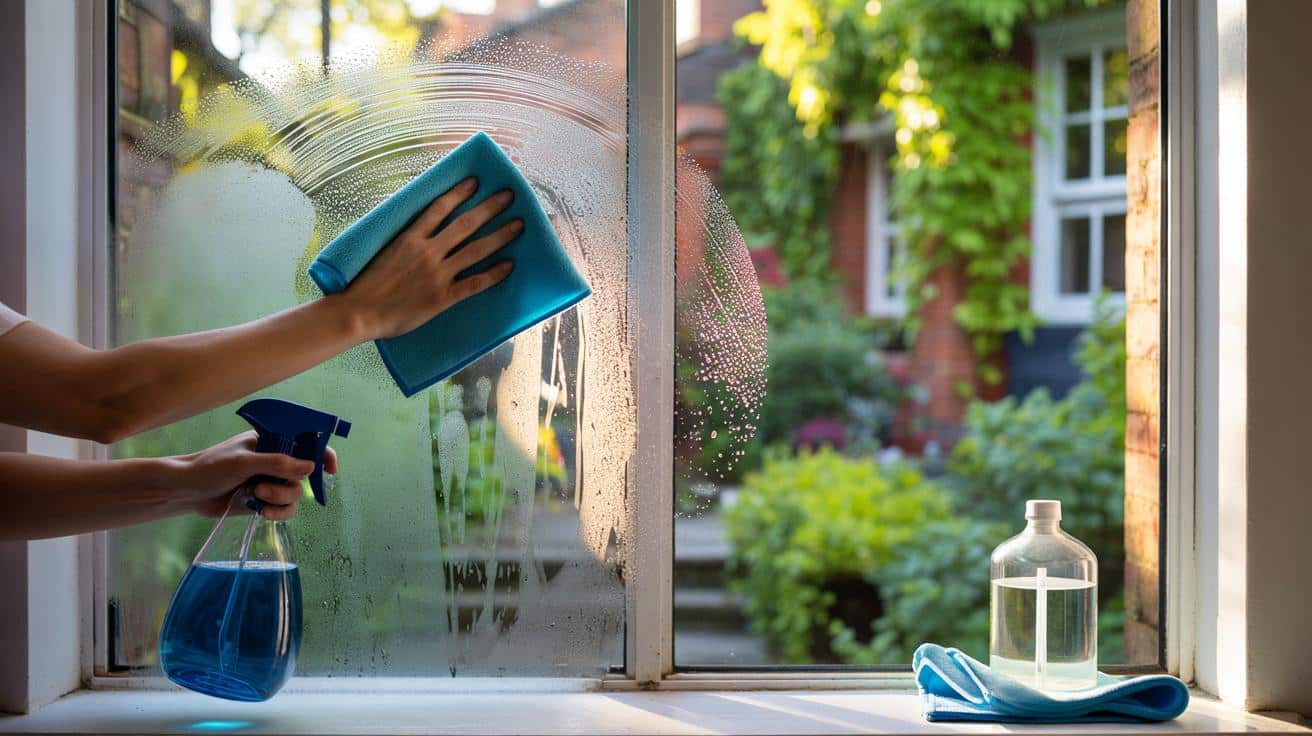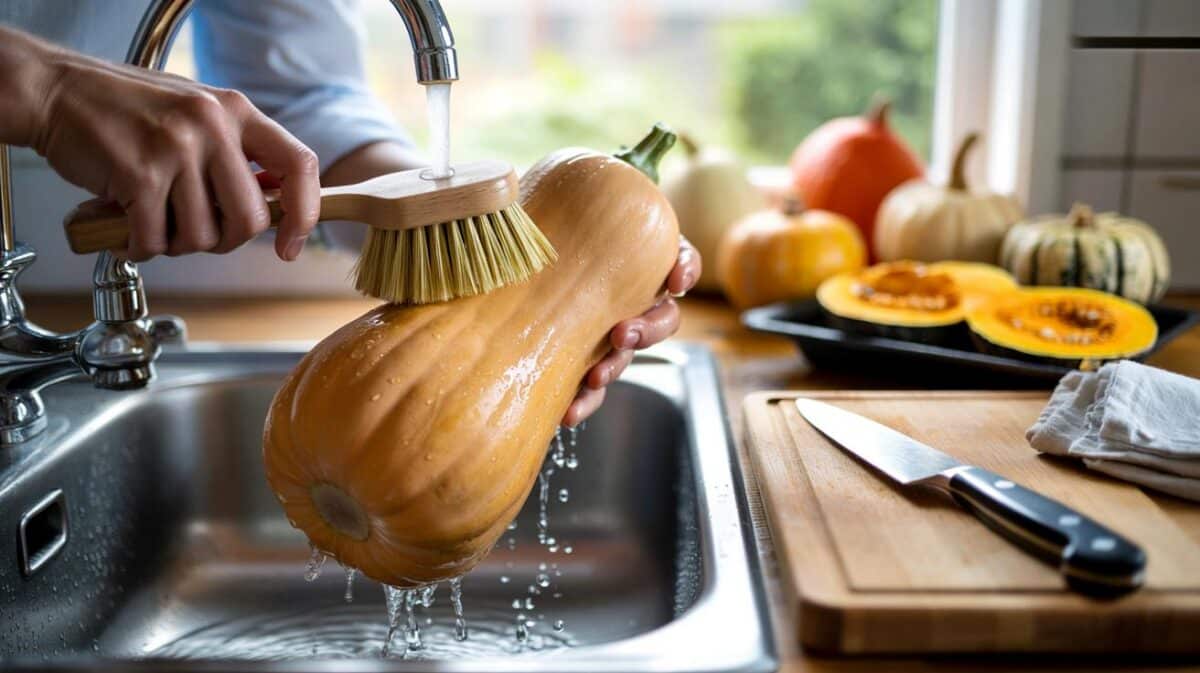Under a slant of sun, every smear, finger-print and grey haze throws itself into view. You reach for a spray, get the sting of fumes, and still end up with streaks that catch the light like train tracks. There’s an easier way — one you can mix in a minute, without breathing in a chemistry set.
Saturday morning, and the glass doors in my London flat looked like a crime scene. Coffee in one hand, blue bottle in the other, I did the usual ritual: spray, wipe, mutter. The smell grabbed the back of my throat, my eyes prickled, and the smears just rearranged themselves. My neighbour, Carol, tapped the pane with a laugh and passed me a small spritz of her own. Vinegar and water, she said. I pulled a face, sprayed, and watched the fog lift in a single, satisfying sweep. The shine felt unfair.
Why a pantry staple beats the big-brand bottle
Glass doesn’t need drama; it needs balance. White vinegar — the cheap, clear kind — is mildly acidic, which cuts through alkaline film from tap water, cooking vapour and sticky hands. Mixed with water, it evaporates cleanly and fast. No heavy perfumes. No rainbow haze. **White vinegar and water make glass behave.** Pair it with a tight-weave microfibre cloth and you get a squeak that almost feels like applause.
Carol swears by it for the kitchen splashback, which takes daily hits of steam and oil. Two passes, ten seconds apart, and the glare vanished as if a filter slid off the world. It’s not just thrift; it’s comfort. Lab studies have found household sprays can add volatile organic compounds to indoor air, enough to trigger headaches in sensitive people. Meanwhile, a litre of vinegar costs less than a glossy trigger bottle, and lasts for months.
There’s a simple bit of science here. Most grime on glass is a cocktail of minerals, skin oils and detergent residue. Vinegar dissolves the mineral part on contact, loosening the rest so a cloth can lift it away. Distilled water prevents new spots from drying into place. Microfibre works like a field of tiny hooks, trapping the loosened film rather than smearing it. *You can hear the soft squeak of clean glass, and it’s oddly satisfying.*
How to mix it right — and clean glass in minutes
Mix 1 part distilled white vinegar with 1 part distilled water in a spray bottle. For a first clean on very greasy glass, add one tiny drop of washing‑up liquid, do a single pass, then switch back to the plain mix. Lightly mist the glass. Wipe in wide, overlapping S‑shapes with a clean microfibre, working from top to bottom. Flip the cloth to a dry side for a quick final buff. **It’s quick, cheap, and kinder on the air you breathe.**
Skip direct sun, which makes any cleaner flash‑dry and streak. Use less spray than you think; drowning the pane just redeposits residue. Choose distilled water if yours is hard, and keep a second, dry cloth only for the final polish. Don’t use vinegar on stone sills or marble ledges; keep the liquid on the glass. We’ve all had that moment when a perfect pane gets thumbed by a child or a curious cat. Let’s be honest: nobody really does that every day.
Think of it as a rhythm, not a chore. Do bathroom mirrors after a steamy shower, and kitchen glass before bed so the next morning starts bright.
“I’ve spent twenty years chasing streaks,” says Jess, a pro cleaner from Bristol. “Nothing beats a 50:50 vinegar mix and two clean cloths. Streak‑free isn’t luck — it’s process.”
- Ratio: 1:1 vinegar to distilled water
- First‑use boost: one drop washing‑up liquid for greasy film
- Cloths: one damp for cleaning, one dry for buffing
- Motion: slow S‑shapes, top to bottom
- Drying time: under two minutes per pane
The quiet ripple effect of swapping the spray
Change one small thing and the room feels different. The vinegar scent fades in under a minute, replaced by nothing — which is the point. No fog that clings to your tongue. No mystery ingredients you can’t pronounce. **Streak‑free isn’t magic — it’s method.** You start noticing how sunlight lands, how the garden looks closer, how your face in the mirror stops wearing a haze.
This isn’t a manifesto. It’s a useful habit you can pick up today, then forget until the glass tells you it’s time again. The bottle lives under the sink next to the tea towels, gets a little shake, does its job, and disappears. Friends ask what you used, expecting a brand name, and you smile because the answer is the opposite: not a brand, just a bottle and a cloth. The view comes back, and somehow the room breathes deeper.
| Point clé | Détail | Intérêt pour le lecteur |
|---|---|---|
| — | 1:1 white vinegar and distilled water | Fast, streak‑free results with pantry staples |
| — | Two‑cloth method and S‑shape wipe | Reduces streaks and cuts cleaning time |
| — | Avoid direct sun, protect stone surfaces | Prevents marks and keeps finishes safe |
FAQ :
- Will my home smell like a chip shop?The scent is brief and gentle. It fades in under a minute as the mix evaporates. If you’re sensitive, crack a window while you clean.
- Can I use brown malt vinegar instead?Stick to clear distilled white vinegar. Brown varieties can stain and leave a faint residue. Clear vinegar dries clean on glass.
- What if my water is very hard?Use distilled or filtered water in the mix, and give a quick final buff with a dry microfibre. That stops mineral spots from re‑landing.
- Is this safe for tinted or coated windows?Most factory tints are embedded in the glass and fine. Avoid aftermarket films unless the manufacturer says vinegar is safe. Test a corner first.
- Can I add essential oils to the mix?You can, but oils may leave a film. If you want a scent, add a single drop of lemon, then finish with a dry buff to keep the pane spotless.








